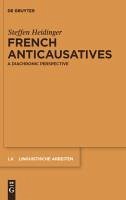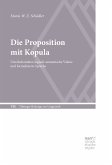How do new ways of encoding valence alternations emerge, how and why do they spread, and what are the consequences of their emergence and spread for already existing patterns? This book discusses these questions on the basis of a concrete example of valence alternation, the French causative-anticausative alternation. The main focus of the proposed analysis is the anticausative member of the alternation and the relation between the two formal types of anticausative verbs in French, the reflexive and the unmarked anticausative (La branche s'est cassée vs. La branche a cassé 'The branch broke'). The emergence and spread of the reflexive anticausative, the consequences of these processes for the unmarked anticausative and the semantic relation between reflexive and unmarked anticausatives are analyzed on the basis of several corpus studies.
Dieser Download kann aus rechtlichen Gründen nur mit Rechnungsadresse in A, B, BG, CY, CZ, D, DK, EW, E, FIN, F, GR, HR, H, IRL, I, LT, L, LR, M, NL, PL, P, R, S, SLO, SK ausgeliefert werden.


